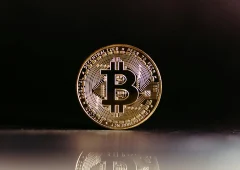Bitcoin DeFi Gains Traction Amid Major Institutional Support
18.01.2025 18:00 1 min. read Kosta Gushterov
Bitcoin-based decentralized finance (BTCFi) had a transformative year in 2024, fueled by the April halving, surging Bitcoin prices, and major infrastructure developments.
The sector’s total value locked (TVL) skyrocketed from $307 million in January to over $6.5 billion by year-end, marking a remarkable 2,000% increase, according to recent data.
A major driver of this growth was Babylon, a Bitcoin-native staking platform that introduced groundbreaking functionality for Bitcoin DeFi. Following its mainnet launch in August, Babylon saw its TVL rise dramatically, reaching $5.2 billion by December. This surge in adoption underscored the platform’s role as a cornerstone of BTCFi innovation.
The introduction of the Runes protocol, enabling fungible tokens on Bitcoin, further expanded the network’s DeFi capabilities. Meanwhile, the approval of U.S. Bitcoin spot ETFs added institutional momentum, pushing Bitcoin’s price to a record high of over $100,000 in December, just after Donald Trump’s presidential win.
Institutional giants like BlackRock and Fidelity played a significant role, managing a majority of Bitcoin ETF assets and fueling confidence in the sector.
With BTCFi evolving rapidly, 2024 solidified Bitcoin’s role not only as a store of value but also as a foundation for decentralized finance. These advancements have positioned Bitcoin-based DeFi for continued growth and broader adoption in the years ahead.
-
1
Bitcoin Hashrate Declines 3.5%, But Miners Hold Firm Amid Market Weakness
27.06.2025 21:00 2 min. read -
2
Trump-Linked Truth Social Pushes for Bitcoin-Ethereum ETF as Crypto Strategy Expands
25.06.2025 19:00 2 min. read -
3
Bitcoin’s Price Closely Mirrors ETF Inflows, Not Corporate Buys
26.06.2025 11:00 2 min. read -
4
Crypto Company Abandons Bitcoin Mining to Focus Entirely on Ethereum Staking
26.06.2025 20:00 1 min. read -
5
Bitcoin Hits New All-Time High Above $112,000 as Short Squeeze and Tariffs Fuel Rally
10.07.2025 0:35 2 min. read
Peter Schiff Warns of Dollar Collapse, Questions Bitcoin Scarcity Model
Gold advocate Peter Schiff issued a stark warning on monetary policy and sparked fresh debate about Bitcoin’s perceived scarcity. In a pair of high-profile posts on July 12, Schiff criticized the current Fed rate stance and challenged the logic behind Bitcoin’s 21 million supply cap.
Bitcoin Price Hits Record Highs as Exchange Balances Plunge
A sharp divergence has emerged between Bitcoin’s exchange balances and its surging market price—signaling renewed long-term accumulation and supply tightening.
What’s The Real Reason Behind Bitcoin’s Surge? Analyst Company Explains
Bitcoin touched a new all-time high of $118,000, but what truly fueled the rally?
Bitcoin Lesson From Robert Kiyosaki: Buy Now, Wait for Fear
Robert Kiyosaki, author of Rich Dad Poor Dad, has revealed he bought more Bitcoin at $110,000 and is now positioning himself for what macro investor Raoul Pal calls the “Banana Zone” — the parabolic phase of the market cycle when FOMO takes over.
-
1
Bitcoin Hashrate Declines 3.5%, But Miners Hold Firm Amid Market Weakness
27.06.2025 21:00 2 min. read -
2
Trump-Linked Truth Social Pushes for Bitcoin-Ethereum ETF as Crypto Strategy Expands
25.06.2025 19:00 2 min. read -
3
Bitcoin’s Price Closely Mirrors ETF Inflows, Not Corporate Buys
26.06.2025 11:00 2 min. read -
4
Crypto Company Abandons Bitcoin Mining to Focus Entirely on Ethereum Staking
26.06.2025 20:00 1 min. read -
5
Bitcoin Hits New All-Time High Above $112,000 as Short Squeeze and Tariffs Fuel Rally
10.07.2025 0:35 2 min. read


